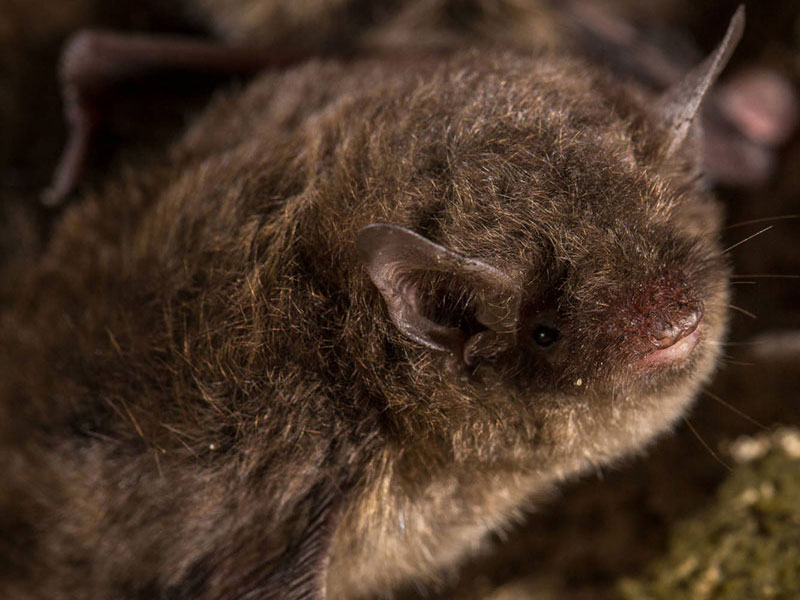Rules
The Division of Forestry requests all cave visitors observe the following guidance to protect State Forest karst resources and the unique organisms they support:
- Avoid disturbing all cave organisms and their environment. Decontaminate clothing and gear as required.
- Pack out everything you bring with you and any trash you find.
- Do not damage cave formations or other surfaces of the caves.
- Do not alter existing or create new cave or sinkhole entrances/openings without first receiving written permission from the State Forest property manager or their designee.
- Do not alter karst passages except when necessary for safety. Inform State Forest personnel if a cave interior has been altered using the “alert” notification feature in the post-trip observation report.
- Do not disturb archaeological or paleontological artifacts.
- Observe all seasonal or temporary cave closures and any cave-specific rules (e.g., daily registration limits). When applicable, cave-specific rules or alerts will be displayed when caves are selected during the trip registration process.
- Always practice safe caving. Recommended considerations:
- Visit caves in groups of at least four.
- Always share your trip plans with someone on the surface.
- Understand the skill level of each member of your entire group and know your group’s limits.
- Check weather forecasts when visiting caves that may flood.
- Be properly equipped for the cave you are visiting.
- Learn to recognize the signs of hypothermia; dress appropriately.
Decontamination Protocol
White-nose syndrome (WNS) is a highly infectious disease responsible for unprecedented levels of mortality to North American bats that hibernate in caves and mines. This disease is associated with the fungus Pseudogymnoascus destructans (Pd) which attacks the bare skin of hibernating bats, causing them to become active more than usual during the hibernation period. This activity burns essential fat stores hibernating bats need to survive through the winter.
While WNS is primarily spread by bat-to-bat contact that then infects the caves they visit, it is possible for humans to transport the disease between caves. Since the spores of the Pd fungus can persist within cave interiors—and on any equipment or clothing exposed to them—for many months or even years, all cave visitors must take practical precautions to assure they are not part of the problem in furthering the spread of WNS.
For the most up-to-date information on WNS, where it has been found, and its impacts on North American bats, visit the USFWS’s WNS website. For information on WNS in Indiana, please visit the DNR’s website.
What are the best ways to decontaminate your clothing and gear?
After each cave trip within Indiana, properly decontaminate anything that went into the cave or may have been in contact with anything that went into the cave. If you follow this rule, there is really nothing more you need to do before your next cave visit.
- The post-trip decontamination process starts before leaving the cave entrance area by removing as much sediment and dirt from equipment and clothing as possible. During transport from the cave, be sure to separate and store all exposed equipment and clothing used during the caving trip away from unexposed equipment.
- The next step is to thoroughly rinse off all visible mud from your clothing, equipment, and boots. Either hose things down in the driveway with a spray nozzle, or soak and rinse in a utility sink or large bins. Pay particular attention to removing the mud in the lugs of your boots.
- After thoroughly rinsing clothing, packs, soft vertical gear, ropes, boots, and other porous equipment, the best approach is to soak everything in hot water (131 F or higher—you may need to adjust your water heater) for at least five minutes. If your clothes washer has a soak cycle and a hot temperature setting, you can completely automate the process for your clothing and other soft items.
- For hard and nonporous equipment (helmet, lights, cameras), wipe down all surfaces with disinfectant wipes or spray them with a disinfectant spray. You should also spray the bottoms of your boots.
Finally, if you plan to visit any caves in a region of North America where the risk of spreading Pd is considered “intermediate” or “high”, never use clothing, equipment, or boots that have been used in Indiana caves, regardless of how well they may have been decontaminated. For a current listing of the “at-risk” states for Pd spread, see the most recent version of the US Fish & Wildlife Service’s Pd decontamination protocol, found here.

